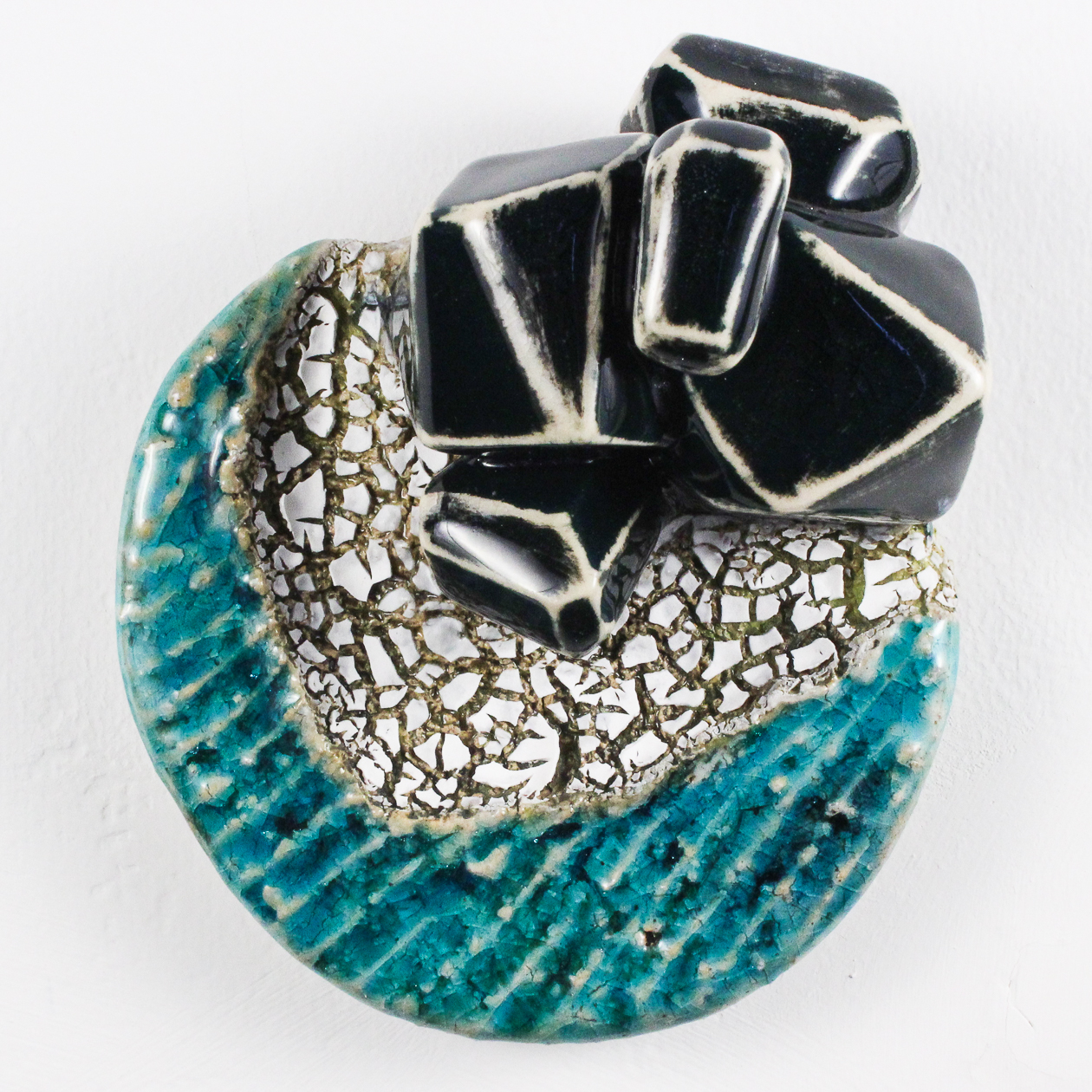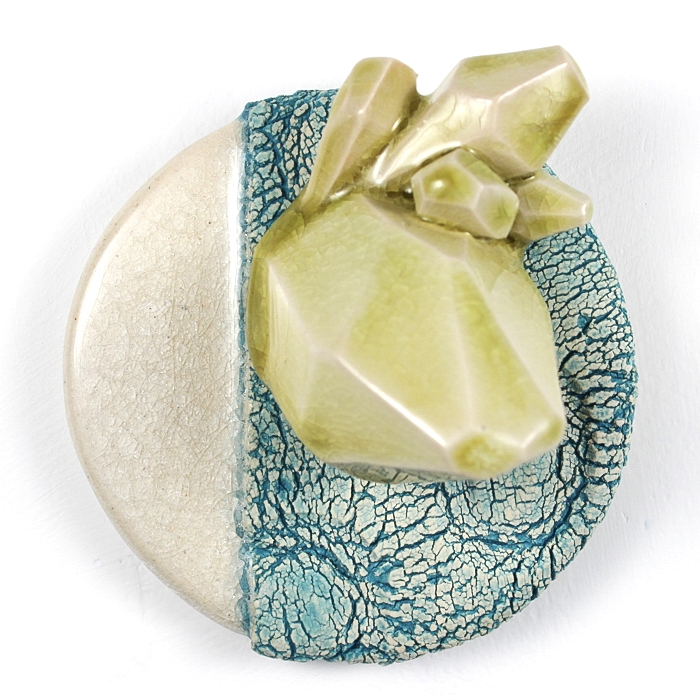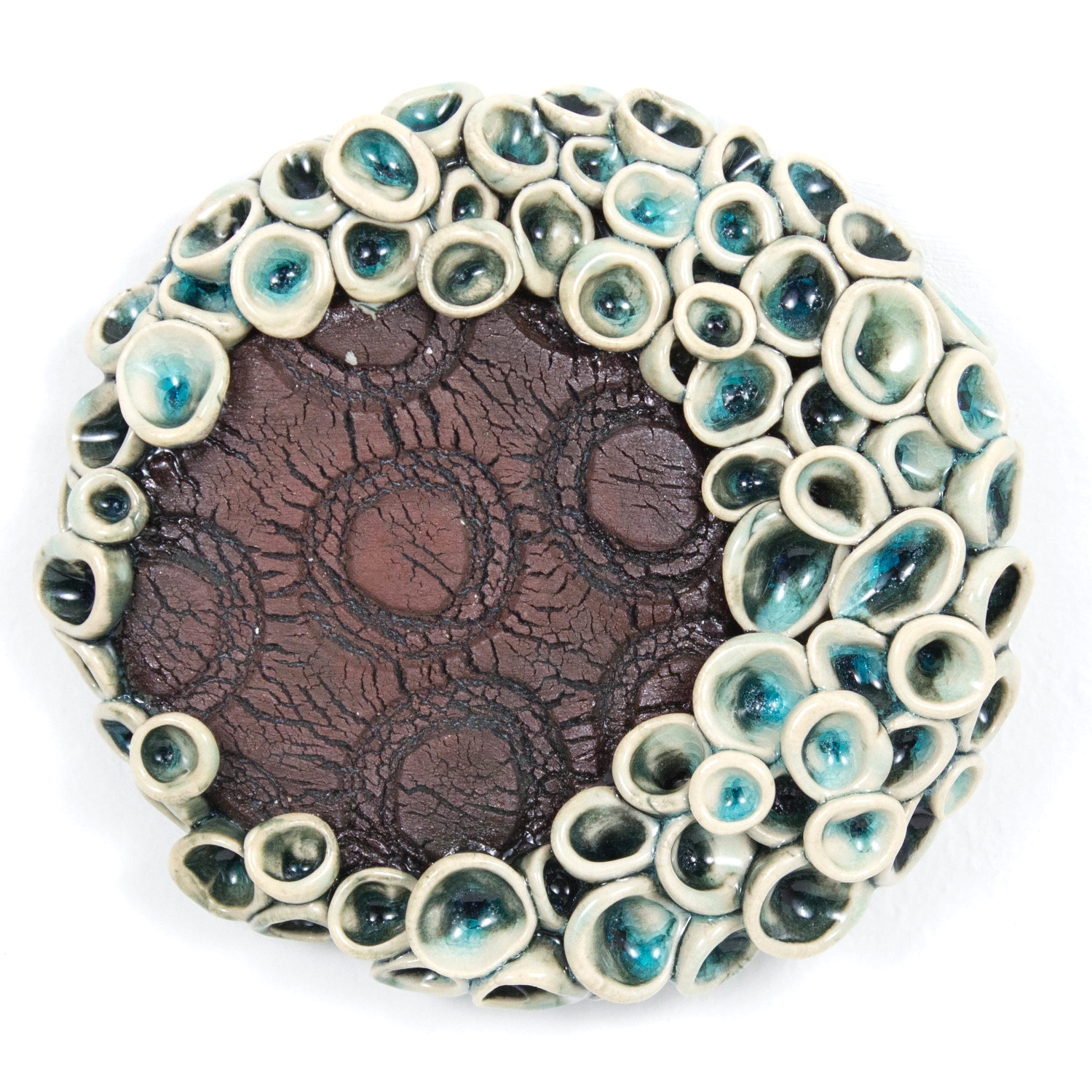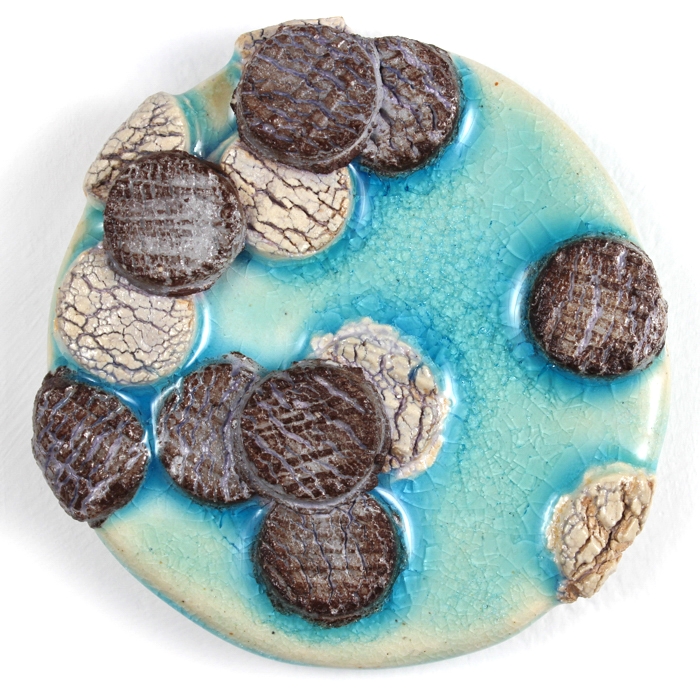The Disk Series explores agricultural landscapes, shifting geologic boundaries, and migrating oceanic phenomena. I investigate human intervention in the landscape by using aerial and microscopic imagery as a point of interpretive departure. The disks are reminiscent of the cone of vision experienced when looking through a microscope, as well as the petri dish where samples are grown and examined. The circular format has become a compositional framework with infinite possibilities.
I’ve been based on the north coast of California for 15 years and in that short period of time I have witnessed significant and abrupt disruption of natural cycles from encroaching wildfire to unusually warm and unseasonably dry spells in a place that’s considered a rain-forest. I use the language of abstraction to explore environmental changes like erosion, global warming, sea-level rise, ocean acidification and spreading oceanic ‘dead zones’. As a coastal dweller, these changes feel very real. Some sea level rise projections have shown that sections of Highway 101 north of Eureka could see monthly flooding by 2023 if adaptation measures aren’t taken.
Of particular interest to me when researching the Anthropocene is the role of stratigraphy. The geologists who study the layers of rock determined when the Anthropocene began, and continue to research and assess human impact on the planet. For example, in 1945 the globe was littered with debris after the first atomic bomb blasts. This debris became embedded in sediments and glacial ice, becoming part of the stratigraphic record. Currently, Researchers at Stanford University are studying samples of sediment from Searsville Reservoir in California, which is one of the eleven international sites that could end up officially defining the beginning of the newest geological period, the Anthropocene Epoch. Each summer, plants grow and die in the reservoir, and a layer of organic matter collects on the bottom. Each winter, a large amount of sandy sediment arrives with the rainy season. Scientists are working to count the summer-winter couplets to go back in time and estimate the exact year of every layer in the mud. If they find a layer with radioactive elements, they may be able to pinpoint the year and season that the Anthropocene began.







































